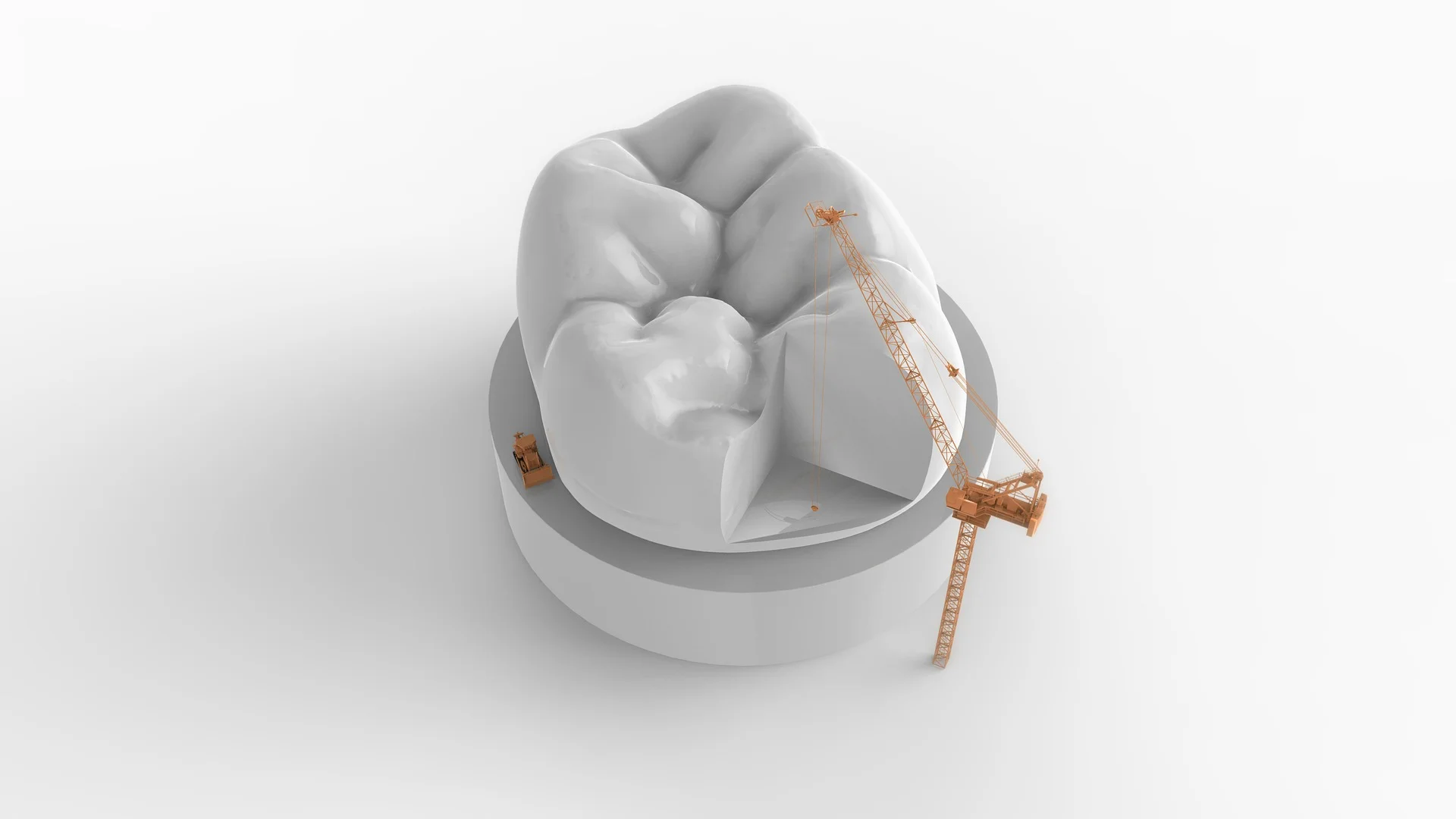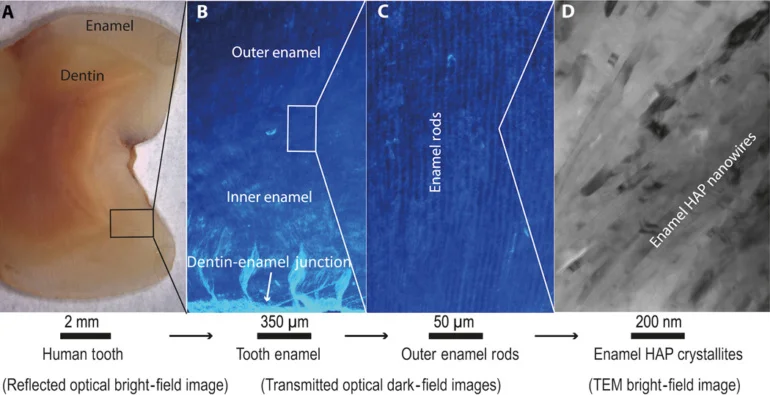
Regeneration of tooth enamel, or at least its significant strengthening, is an important issue that scientists have been trying to solve for many years. And it seems that a big step forward has been made in this direction.
Researchers from several educational institutions in Britain and the United States have managed to develop an artificial enamel with high strength characteristics. It was not easy to do this, since real enamel has impressive strength. At the same time, it is very elastic, to withstand permanent loads. Such qualities are achieved due to the complex structure of a group of calcium, phosphorus and oxygen atoms that combine and form crystalline filaments. Enamel-reproducing cells form a magnesium-rich coating around these threads. Further, the threads are intertwined, thereby creating a high-strength composition, which in the future turns into something similar to bunches and curls.

To create the artificial material, the researchers mimicked the structure of real enamel by combining atomic calcium, phosphorus and oxygen to create similar crystalline filaments. Next, for the correct assembly, scientists used a similar to the natural way of combining. Instead of bioprocesses, they used extremely high temperatures, which made it possible to achieve the desired organization of hydroxylapatite threads (this is a mineral that is the main part of real tooth enamel). After that, the threads were coated with a metal-based composition. The study is detailed in the journal Science.
The material was checked by means of a pointed diamond striker. Faux enamel outperformed real enamel in six ways, including elasticity and vibration absorption.
It is worth noting that artificial enamel will not soon be used for its intended purpose. To begin with, scientists will have to find out how well it can connect with natural enamel. Also, some nuances of production are capable of hindering the mass development of the material, for example, the use of high temperatures for heating (up to +300 degrees Celsius), freezing and cutting with a diamond saw. It is also interesting that the material in the future can be used not only in dentistry, but also in the production of armor plates and even mechanical engineering.
Researchers from several educational institutions in Britain and the United States have managed to develop an artificial enamel with high strength characteristics. It was not easy to do this, since real enamel has impressive strength. At the same time, it is very elastic, to withstand permanent loads. Such qualities are achieved due to the complex structure of a group of calcium, phosphorus and oxygen atoms that combine and form crystalline filaments. Enamel-reproducing cells form a magnesium-rich coating around these threads. Further, the threads are intertwined, thereby creating a high-strength composition, which in the future turns into something similar to bunches and curls.

Human tooth enamel
To create the artificial material, the researchers mimicked the structure of real enamel by combining atomic calcium, phosphorus and oxygen to create similar crystalline filaments. Next, for the correct assembly, scientists used a similar to the natural way of combining. Instead of bioprocesses, they used extremely high temperatures, which made it possible to achieve the desired organization of hydroxylapatite threads (this is a mineral that is the main part of real tooth enamel). After that, the threads were coated with a metal-based composition. The study is detailed in the journal Science.
The material was checked by means of a pointed diamond striker. Faux enamel outperformed real enamel in six ways, including elasticity and vibration absorption.
It is worth noting that artificial enamel will not soon be used for its intended purpose. To begin with, scientists will have to find out how well it can connect with natural enamel. Also, some nuances of production are capable of hindering the mass development of the material, for example, the use of high temperatures for heating (up to +300 degrees Celsius), freezing and cutting with a diamond saw. It is also interesting that the material in the future can be used not only in dentistry, but also in the production of armor plates and even mechanical engineering.
Login or register to post comments
Comments 0